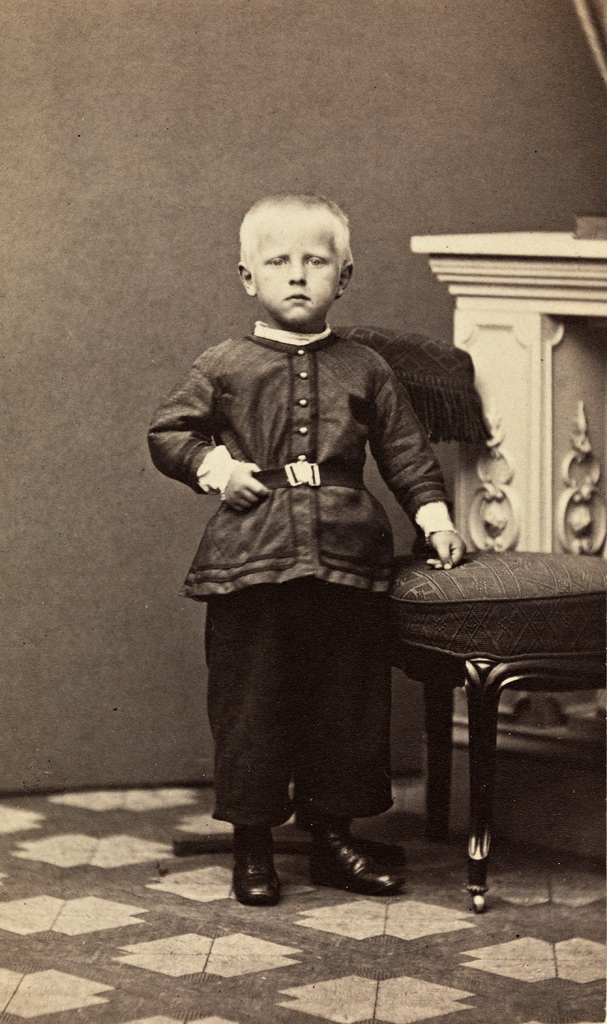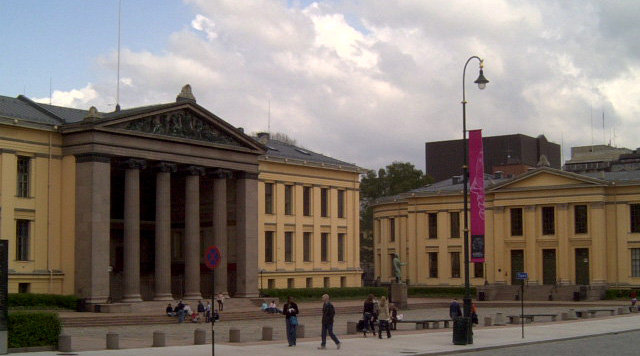|
Polhøgda
Polhøgda is the home of the Fridtjof Nansen Institute. It was originally built as the private home of Norwegian explorer Fridtjof Nansen. The manor home's architecture is Roman Revival, and the former estate lies between Lysaker and Fornebu in Bærum, Norway. Use by Fridtjof Nansen The property originally belonged to Fornebu farm, but was separated from the farm in 1897. Construction on the property took place in 1900 and 1901. It was the home of Fridtjof Nansen and Eva Nansen from 1901, and was named ''Polhøiden'' in the day. Their son Odd Nansen was born and grew up here. The building was designed by architect Hjalmar Welhaven, in cooperation with Fridtjof Nansen. Welhaven was Eva Nansen's first cousin. The architectural style is Neo-Roman. The home was an important location of social life for a group of artists and intellectuals collectively known as ''Lysakerkretsen''. The Nansen couple had lived at ''Godthaab'' near Lysaker since 1889, and was joined by people su ... [...More Info...] [...Related Items...] OR: [Wikipedia] [Google] [Baidu] |
Fridtjof Nansen
Fridtjof Wedel-Jarlsberg Nansen (; 10 October 1861 – 13 May 1930) was a Norwegian polymath and Nobel Peace Prize laureate. He gained prominence at various points in his life as an explorer, scientist, diplomat, humanitarian and co-founded the Fatherland League (Norway), Fatherland League. He led the team that made the first crossing of the Greenland interior in 1888, traversing the island on cross-country skis. He won international fame after reaching a record northern latitude of 86°14′ during his Nansen's Fram expedition, ''Fram'' expedition of 1893–1896. Although he retired from exploration after his return to Norway, his techniques of polar travel and his innovations in equipment and clothing influenced a generation of subsequent Arctic and Antarctic expeditions. He was elected an International Member of the American Philosophical Society in 1897. Nansen studied zoology at the Royal Frederick University in Christiania, Norway, Christiania and later worked as a curato ... [...More Info...] [...Related Items...] OR: [Wikipedia] [Google] [Baidu] |
Nansen Institute
The Fridtjof Nansen Institute (FNI) is an independent research foundation specializing in research on international environmental, energy and resource management issues, including political and legal aspects. The institute is named after the Norwegian Arctic explorer, scientist, diplomat and Nobel Peace Prize laureate Fridtjof Nansen. It is situated in Nansen's old mansion, Polhøgda, in Bærum municipality outside Oslo. Organisation The Fridtjof Nansen Institute has 30-40 scholarly employees. Most of them come from the fields of political science and law, but historians, economists and anthropologists are also represented among the research staff. Iver B. Neumann has served as FNI Director since December 2019. Main focus FNI activities include academic studies as well as contract work for research, investigations and evaluations. Current FNI research has seven focal points: * Global environmental governance and law * Climate change * Law of the Sea and marine affair ... [...More Info...] [...Related Items...] OR: [Wikipedia] [Google] [Baidu] |
Lysaker
Lysaker is an area in Bærum Municipality, Akershus County, Norway. Lysaker is the easternmost part of Bærum and borders Oslo proper. Lysaker was initially a farming community, later becoming a residential area. Today it is primarily known as a business and trade area, and a public transport hub. It is considered part of Stor-Oslo (Greater Oslo), and is home to offices of numerous domestic and international businesses. Geographical location Lysaker is located where a stream, Lysakerelva, empties into Lysakerfjorden—a branch of the Oslofjorden. This stream is the western border of Oslo proper. To the south-east Lysaker is bordered by the fjord. To the south-west is the Fornebu area, where one of Oslos two airports were located until Oslo Airport, Gardermoen, was expanded in order to handle all the traffic alone. To the west and north are the primarily residential areas of Stabekk and Jar. To the east is Sollerud and Lilleaker in Ullern borough. History Lysaker, ... [...More Info...] [...Related Items...] OR: [Wikipedia] [Google] [Baidu] |
Odd Nansen
Odd Nansen (6 December 1901 – 27 June 1973) was a Norway, Norwegian architect, writer, and humanitarian. He is credited with being a co-founder of UNICEF and for his humanitarian efforts on behalf of Jews in the early years of World War II. Biography Odd Nansen was born in Bærum, Akershus, Norway. He was the second youngest of five children born to scientist and explorer Fridtjof Nansen. He was raised at Lysaker outside of Oslo. After his mother Eva Nansen died in 1907, he was raised in the home of his neighbor Anton Klaveness. In 1920, he began studying architecture at the Norwegian Institute of Technology in Trondheim. From 1927 to 1930, he worked in New York City. During 1930, he returned to Oslo and apprenticed with Arnstein Arneberg. In 1931, Nansen started his architectural practice in Oslo. He also formed the humanitarian organization Nansenhjelpen in 1936 to provide relief for Jews fleeing Nazi persecution in central Europe. The Jewish Children's Home in Oslo (''jødis ... [...More Info...] [...Related Items...] OR: [Wikipedia] [Google] [Baidu] |
Hjalmar Welhaven
Hjalmar Welhaven (26 December 1850 – 18 April 1922) was a Norwegian architect, palace manager, and sportsman. Biography Personal life Welhaven was born in Christiania (now Oslo), Norway. He was the son of writer Johan Sebastian Welhaven and Josephine Angelica Bidoluac. He married painter Margrethe Petersen Backer in 1876. His aunts were Maren Sars and writer Elisabeth Welhaven, and he was a cousin of historian Ernst Sars, biologist Georg Sars and singer Eva Nansen. He was a brother-in-law of painter Harriet Backer and pianist and composer Agathe Backer Grøndahl. He was the father of the sculptor Sigri Welhaven and the painter Astri Welhaven Heiberg. Career Welhaven was a student at the Statens håndverks- og kunstindustriskole (now Norwegian National Academy of Craft and Art Industry) in 1870. He later studied architecture at Technische Hochschule (now Leibniz University Hannover) during 1871-73. He started practicing as an architect from 1875. In 1883 he wa ... [...More Info...] [...Related Items...] OR: [Wikipedia] [Google] [Baidu] |
Eva Nansen
Eva Helene Nansen (née Sars; 17 December 1858 – 9 December 1907) was a celebrated Norwegian mezzo-soprano singer. She was also a pioneer of women's skiing. Personal life Born in Christiania (now Oslo), she was a daughter of priest and professor of zoology Michael Sars (1805–1869) and his wife Maren Sars (1811–1898), and sister to biologist Georg Ossian Sars and historian Ernst Sars. Through her mother, she was a niece of poet and critic Johan Sebastian Welhaven and writer Elisabeth Welhaven, a first cousin of architect Hjalmar Welhaven and police chief Kristian Welhaven, and a great-granddaughter of priest Johan Sebastian Cammermeyer. In September 1889 she married Fridtjof Nansen, the polar explorer and later winner of the Nobel peace prize for his work with refugees, as the League of Nations' High Commissioner for Refugees. They had several children, including Odd Nansen, a notable architect. She died of pneumonia on 9 December 1907 at their home, Polhøgda, in Lys ... [...More Info...] [...Related Items...] OR: [Wikipedia] [Google] [Baidu] |
Foundation (nonprofit Organization)
A foundation (also referred to as a charitable foundation) is a type of nonprofit organization or charitable trust that usually provides funding and support to other charitable organizations through grants, while also potentially participating directly in charitable activities. Foundations encompass public charitable foundations, like community foundations, and private foundations, which are often endowed by an individual or family. Nevertheless, the term "foundation" might also be adopted by organizations not primarily engaged in public grantmaking. Description Legal entities existing under the status of "foundations" have a wide diversity of structures and purposes. Nevertheless, there are some common structural elements. * Legal requirements followed for establishment * Purpose of the foundation * Economic activity * Supervision and management provisions * Accountability and auditing provisions * Provisions for the amendment of the statutes or articles of incorporation * ... [...More Info...] [...Related Items...] OR: [Wikipedia] [Google] [Baidu] |
Norwegian Geographical Society
The Norwegian Geographical Society (in Norwegian: Det norske geografiske Selskab) is a Norwegian learned society founded in 1889. Among the initiators was geologist Hans Henrik Reusch, who chaired the society from 1898 to 1903, and again from 1907 to 1909, and was also an honorary member. In a speech at the society in January 1890 polar researcher Fridtjof Nansen proposed the Fram expedition, an attempt to reach the North Pole, and the building of the polar ship Fram. The society has published the ''Norwegian Journal of Geography __NOTOC__ ''Norwegian Journal of Geography'' () is a peer-reviewed scientific journal published by Routledge on behalf of the Norwegian Geographical Society. It covers geographical topics of interest to Norwegian researchers giving equal weight to ...'' since 1926. References External links * Geographic societies Organisations based in Oslo 1889 establishments in Norway Scientific organizations established in 1889 {{norway-org-stub ... [...More Info...] [...Related Items...] OR: [Wikipedia] [Google] [Baidu] |
Norwegian Academy Of Science And Letters
The Norwegian Academy of Science and Letters (, DNVA) is a learned society based in Oslo, Norway. Its purpose is to support the advancement of science and scholarship in Norway. History The Royal Frederick University in Christiania was established in 1811. The idea of a learned society in Christiania surfaced for the first time in 1841. The city of Trondhjem had no university, but had a learned society, the Royal Norwegian Society of Sciences and Letters, established in 1760. The purpose of a learned society in Christiania was to support scientific studies and aid publication of academic papers. The idea of the Humboldt-inspired university, where independent research stood strong, had overtaken the instrumental view of a university as primarily a means to produce civil servants. The city already had societies for specific professions, for instance the Norwegian Medical Society, which was founded in 1833. However, these societies were open to both academics within medicine as ... [...More Info...] [...Related Items...] OR: [Wikipedia] [Google] [Baidu] |
Hans E
Hans may refer to: __NOTOC__ People * Hans (name), a masculine given name * Hans Raj Hans, Indian singer and politician ** Navraj Hans, Indian singer, actor, entrepreneur, cricket player and performer, son of Hans Raj Hans ** Yuvraj Hans, Punjabi actor and singer, son of Hans Raj Hans * Hans clan, a tribal clan in Punjab, Pakistan Places * Hans, Marne, a commune in France * Hans Island, administrated by Greenland and Canada Arts and entertainment * ''Hans'' (film) a 2006 Italian film directed by Louis Nero * Hans (Frozen), the main antagonist of the 2013 Disney animated film ''Frozen'' * ''Hans'' (magazine), an Indian Hindi literary monthly * ''Hans'', a comic book drawn by Grzegorz Rosiński and later by Zbigniew Kasprzak Other uses * Clever Hans, the "wonder horse" * ''The Hans India'', an English language newspaper in India * HANS device, a racing car safety device * Hans, the ISO 15924 code for Simplified Chinese characters See also *Han (other) Han may refer t ... [...More Info...] [...Related Items...] OR: [Wikipedia] [Google] [Baidu] |
University Of Oslo
The University of Oslo (; ) is a public university, public research university located in Oslo, Norway. It is the List of oldest universities in continuous operation#Europe, oldest university in Norway. Originally named the Royal Frederick University, the university was established in 1811 as the de facto Norwegian continuation of Denmark-Norway's common university, the University of Copenhagen, with which it shares many traditions. It was named for King Frederick VI of Denmark and Norway, and received its current name in 1939. The university was commonly nicknamed "The Royal Frederick's" (''Det Kgl. Frederiks'') before the name change, and informally also referred to simply as ''Universitetet'' (). The university was the only university in Norway until the University of Bergen was founded in 1946. It has approximately 27,700 students and employs around 6,000 people. Its faculties include (Lutheranism, Lutheran) theology (with the Lutheran Church of Norway having been Norway's ... [...More Info...] [...Related Items...] OR: [Wikipedia] [Google] [Baidu] |






